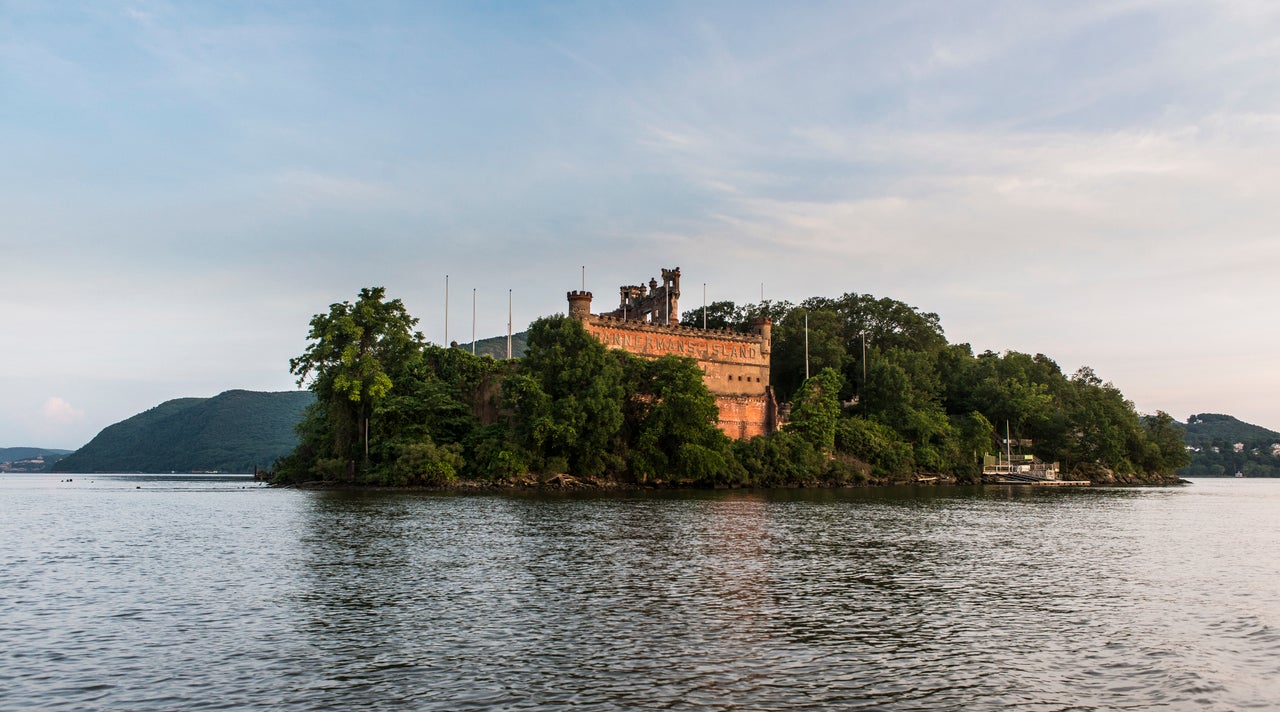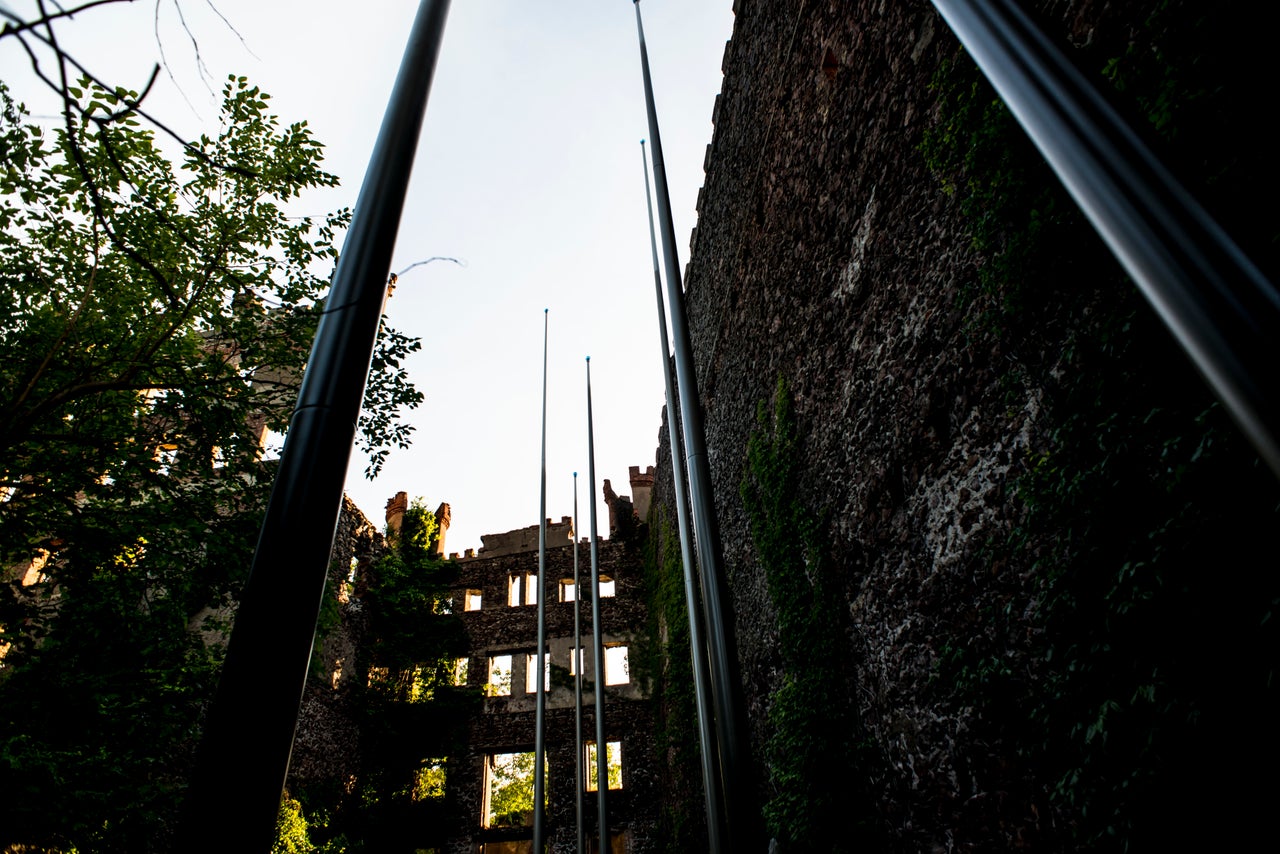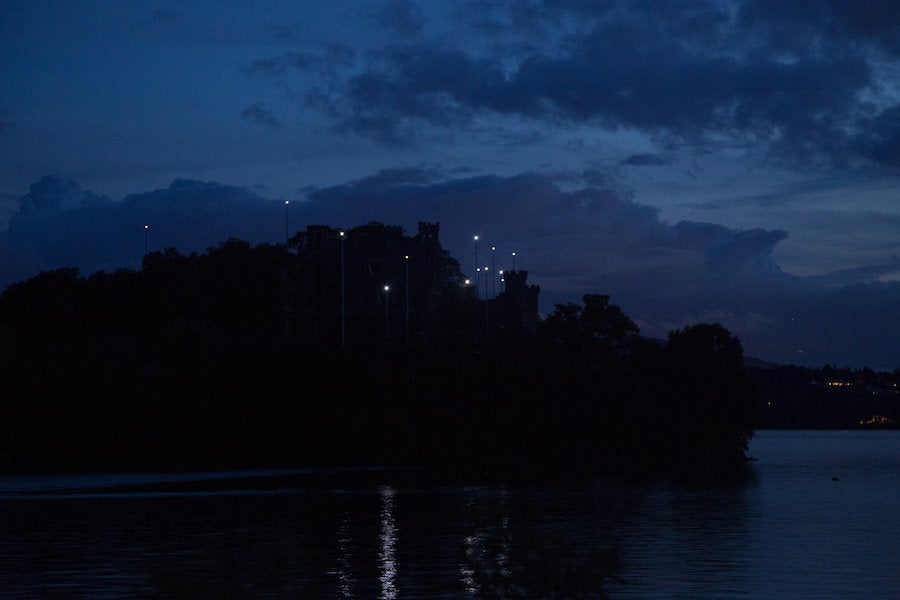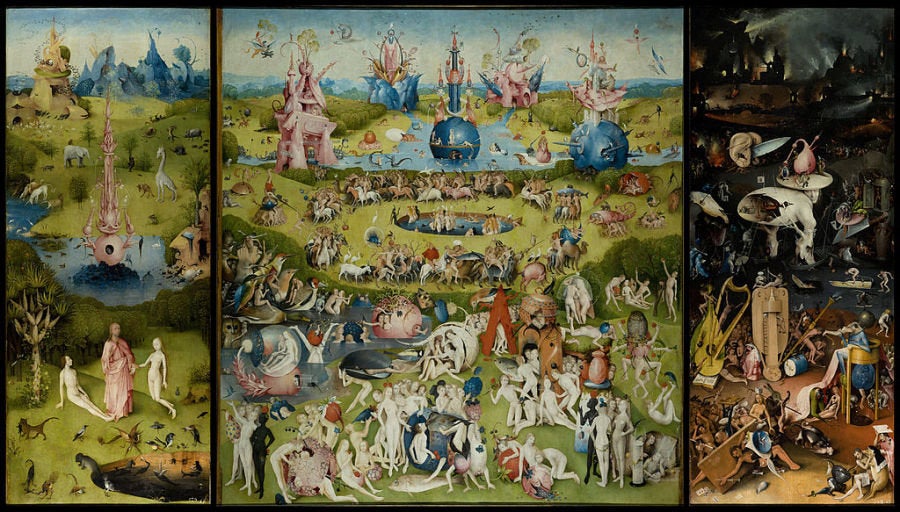If you’ve ever taken the Metro-North train from New York City, you may have noticed a strange island floating in the Hudson River about 50 miles up, as you move between Cold Spring and Beacon.
It’s a small knot of land, unusual in and of itself, and made all the more surreal by the castle ruins resting atop it. The crumbled facade of an ornate brick structure seems like something left over from 17th-century Europe, not upstate New York. If you hazily laid eyes on it while fading in and out of a nap, you might mistake it for the stuff of dreams.
Artist Melissa McGill, who has lived in Beacon for almost 10 years, became transfixed by the anomalous land mass and castle remains housed upon it. Even more so, however, she was interested in the conversations that the peculiar landmark would inspire ― the gossip, the faulty histories, the myths.
“When I would ask ‘what is that crazy castle on the island?’ most people didn’t really know,” McGill explained in an interview with The Huffington Post. “There was a lot of mythology growing, even just on the train. I’d hear others pointing it out and talking about it and saying crazy things. ‘It was built in the 1700s!’ ‘A king lived there!’”

McGill began focusing not on the stories themselves, but the information such stories left out. She saw a parallel between the gaps in castle lore and the empty spaces in its architecture. “My work has always been about this relationship between absence and presence,” McGill continued. “So that definitely piqued my curiosity.”
After conducting some research, McGill learned more about the origins of the mysterious island castle. Namely, that it’s officially titled Bannerman Castle, after Francis Bannerman V, a Scottish immigrant who opened up the first-ever military surplus shop in New York after the Civil War. Bannerman worked with his son, Francis Bannerman VI, to scavenge and sell the remains of past wars, everything from sandals to weapons. In 1898, the young Bannerman made their largest purchase yet ― almost all the military surplus from the Spanish-American war. Since he couldn’t keep such a massive supply of weaponry in the middle of the city, the Bannermans got creative and purchased a small island in the Hudson River.
Francis Bannerman VI built the castle, mapping out plans on napkins and constructing it with scrap metal, old bed frames and concrete. (There’s not one true right angle on the property.) The edifice was created as an optical illusion, meant to appear larger from the outside than it actually was. Sadly, in 1920, shortly after the younger Bannerman’s death, the castle’s powder house exploded, leaving the place in shambles. Later, in 1969, a fire took down most of what remained. Since the fire raged on a virtually abandoned island, firemen decided to let the flames burn out themselves. What was left behind is still visible today.

But this portion of the island’s saga, which explains its basic function from the 19th century onward, was only, for McGill, a small fraction of the land mass’ history. She researched more still, and learned the island used to be home to the indigenous Lenape and Mohican populations. While studying Lenape folklore, McGill was moved by their belief in the “White Road” ― or the Milky Way ― thought to be a bridge from this world to the next.
The island’s history stemmed back further still, to over 20,000 years ago when a glacier gouged out the Hudson fjord, accidentally leaving a slab of rock left behind. “In collecting these stories, it wasn’t so much the specifics of what was being said that interested me,” McGill explained. “But rather this lack of information and the absence of one dominant story.”
This stunning indeterminacy manifested even in the island’s name. Or rather, names. “When I would go back and look at old maps, the island was spelled differently in every article I found,” McGill said. “It must have had 50 names.” Pollopel, Pollepel, Polypus, Pollaples, Polapis. As New York Times critic Sam Anderson wrote in the exhibition catalogue: “We don’t know if it was named after a cactus or a lovesick girl or an obsolete piece of sailing equipment.”

To pay homage to the ambiguity and absence that permeates the island, McGill embarked upon a sculptural project. She created 17 poles, ranging from 40 to 80 feet high, and scattered them throughout the castle remains and around the island. Each pole is topped with an LED light and blue, glass-blown orb. When the sun sets, the lights turn on one by one, adding 17 additional stars to the night sky, helping to sketch out the space where the castle once stood. After two hours, they return to darkness once again. She dubbed the work “Constellation.”
Mapped stars, like the mysterious island on which they dwell, mean many different things to many different people, taking on various shapes, stories and mythologies over their seemingly infinite lifespans. McGill draws a connection between today’s night sky and the Lenape White Way, also alluding to the various theories and ill-informed gossip exchanged by train passengers gawking out the window. To McGill, these are all connected ― all various forms of mapping, of myth-making.
“I wanted to create a sculpture meant to me seen from many different angles, many different perspectives,” McGill said. “A lot of different cultures have their own ways of naming stars and seeing pictures in the sky. I wanted the piece to include all of these different possibilities. People can come and bring their reading.”

To fully experience the work, viewers sign up to take a boat tour around the island that begins about an hour before sundown. A group journeys to the island, learning about the history of the peculiar landmark on the way, and then has time to roam the ruins while the sun is still out. Viewers then return to the boat and orbit the island slowly as the sun sets and the stars, both real and artificial, come out. The whole adventure takes a bit over two hours.
“The experience of this work cannot be separated from everything else,” McGill explained. “You feel the breeze on your face and you smell the river and you see the train go by. Every boat tour I’ve been on, people get hushed when the lights come on. There is a quietness and everyone is really there. That’s a rare experience today.”
Because the work relies so much on the particulars of the environment surrounding it, every iteration of “Constellation” is different. In the autumn, red leaves and a crisp wind punctuate the red brick facade. Some nights fog blocks out the other stars in the sky, leaving only “Constellation” to light up the thick gray of night.
“It’s very much a project that is responsive to everything around it,” McGill said. “As the light goes down, the bottoms of the poles disappear and kind of float, then the castle disappears, and you just see these points of light making this map, connecting past and present.”

